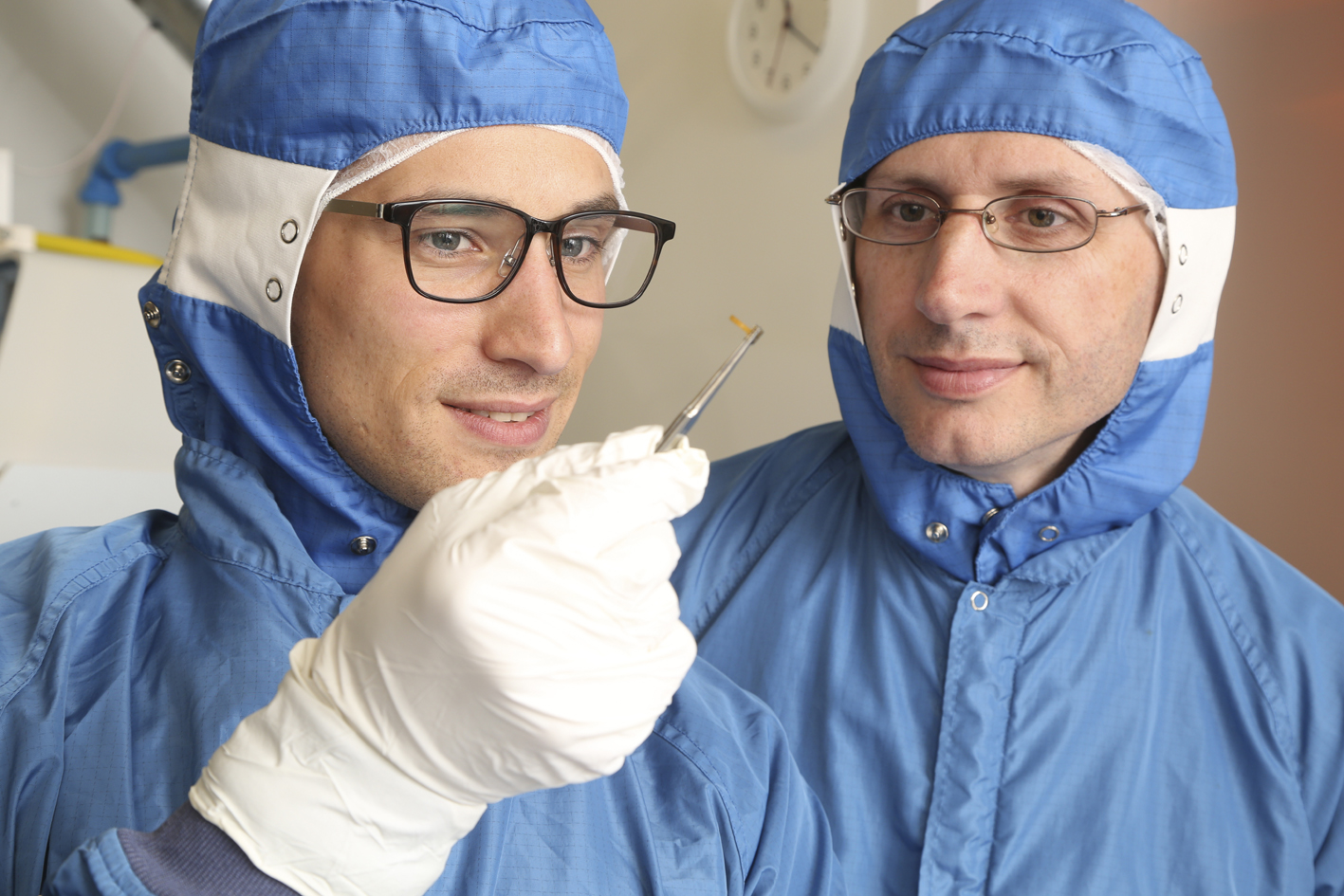The electrode is the workhorse of brain research, playing a crucial role in investigating neurological diseases such Parkinson’s disease or epilepsy. However, as electronic data-capture via this method has been refined to target individual neurons, brain research has been hampered by the tendency of current electrode technology to kill the cells into which it is inserted.
Today, re-imagining the humble electrode is helping University of Calgary researchers overcome that limitation. Their nano-edge microelectrode is showing exciting early potential in understanding and treating epilepsy, and forms the basis of a new startup company, Neuraura.
This work was inspired when Colin Dalton, adjunct professor in Electrical and Computer Engineering, began working with U of C’s Hotchkiss Brain Institute about a decade ago and recognized an opportunity for innovation in the highly adaptable nature of electrode design.
“The off-the-shelf devices that neuroscientists were buying were not what they needed for their research,” he recalls. “I said, ‘I can make those for you. I can make any size or shape you want.’ We started putting electrodes where we wanted them to be, changing their size, their spacing, and their shape.”
These changes solved an immediate problem, but also raised broader questions about how and why these investigators were taking electrical readings from cells in the first place. Such information processing challenges were especially interesting to Dalton, who also oversees the university’s micro fabrication cleanroom facility, the Microsystems Hub. He realized that not only might it be possible to come up with an entirely new approach to tracking electrical signals in brain cells, the facility could also make the necessary tools to do so.
Dalton first turned to CMC Microsystems for simulation software that could model the way that neurons communicate with one another. He credits CMC with facilitating the daunting process of taking well-established technology back to the drawing board.
“Without access to the kind of software that we were working with, we wouldn’t have gained the fundamental knowledge of what really is happening at the cellular level,” he says. “We were able to work out what was happening between the neurons and the electrode that was in contact with these cells, and then could start to simulate different electrode shapes.”
“Instead of the traditional, perfectly flat, metal electrode, we looked at ones with a nano-edge around the circumference. We did not need to damage the cell to achieve scalability, giving us better signal-to-noise ratio.”
Dalton’s efforts accelerated with the arrival of Pierre Wijdenes, a PhD candidate who had done industrial design work in France and brought an even more critical insight to the project.
“In my previous work as a human factors engineer, we looked at the interaction between systems and technology,” says Wijdenes. “We developed technology that answered people’s needs, to the point where the interaction becomes seamless.”
The need, in this case, was collecting information from a cell in such a way as to ensure that process did not affect the behavior or the health of the cell. The outcome has succeeded beyond everyone’s expectations, shedding light on neuronal activities that were previously inaccessible.
“We were able to work out what was happening between the neurons and the electrode that was in contact with these cells”.
Perhaps the most significant of these findings has been confirmation of the epileptic aura, a particular taste or tingling that individuals say they experience before the onset of a seizure. Such claims have been anecdotal until now, but neural recordings of animal brain cells have pointed to the existence of this phenomenon.
“We are now starting to see indicators in the electrical signals in the brain, just before you have this massive electrical seizure,” says Dalton, who regards this as the first step toward dealing with epilepsy in real time. “You can see things occurring, so as soon as we can do that repeatably, we can start predicting seizures, ultimately letting people know what is going to happen and perhaps even do some kind of intervention.”
Such a powerful application has inspired him and Wijdenes to found their startup, Neuraura, whose name is taken from a combination of “neuron” and “aura”.
“The whole idea is to increase the innovation cycle, to get these things built at the micro and nano scale,” says Dalton, who sees CMC playing a critical role in providing the knowledge and the connections to facilitate this kind of cutting-edge enterprise. “There are a lot of people out there who have got some great ideas but they can’t access the equipment they need. CMC is helping leverage what’s actually out there in universities.”
Photo: Mike Ridgewood/Photo Features
April 2018

